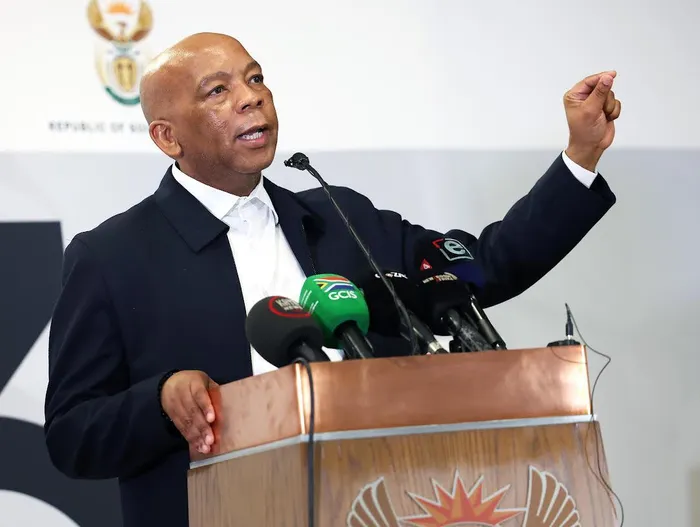Grid recovery brings hope for load shedding-free summer

Electricity and Energy Minister Kgosientsho Ramokgopa outlines progress in South Africa's electricity sector
Image: Jairus Mmutle/GCIS
South Africa’s state of power grid shows real momentum after years of disruption, with unplanned outages shrinking, reliability rising, and a clear path toward a stable summer.
During a media briefing in Pretoria on Wednesday, Minister of Electricity and Energy Dr Kgosientsho Ramokgopa framed the August briefing as evidence that disciplined maintenance, unit returns, and strategic upgrades finally translate into tangible, near-term resilience for households and businesses.
The briefing, which draws on the Department of Electricity and Energy’s August 2025 State of Electricity briefing, outlined a landscape in which unplanned outages are trending down and the grid shows signs of strengthened resilience ahead of the coming summer.
Ramokgopa opened by acknowledging the progress while tempering expectations.
“What we’re seeing is a recovery trajectory delivering real results - lower unplanned losses, higher reliability metrics, and a clearer path to secure generation capacity for the 2025/26 summer,” the minister said.
“We are not claiming victory, but we are confident that the combination of disciplined maintenance, returning units to service, and strategic upgrades will continue to strengthen the grid’s resilience.”
Key numbers presented in the briefing portray a sector moving away from the worst days of load shedding toward a more stable operating envelope.
There has been no load shedding since 15 May 2025, with only 26 hours recorded between 1 April and 31 July 2025. Between 1 April and 7 August 2025, the Unplanned Capacity Loss Factor (UCLF) fell to 28.35%, a week-on-week improvement of about 0.23%.
The ministry cautioned that the system remains sensitive to external pressures and the realities of operating a large, aging fleet - still, the data point to meaningful gains.
Ramokgopa stated that the year-to-date Energy Availability Factor (EAF) stood at 60.14% by 8 August 2025, up roughly 4.4 percentage points from April 2025.
The weekly EAF oscillated between 62% and 70%, with a month-to-date average of 65.38%, signalling growing fleet stability and reliability.
On the fuel side, he stated that the Open Cycle Gas Turbine (OCGT) performance showed a notable uptick in activity. The OCGT load factor reached 5.99% for the week, up from 0.31% the prior week.
He stated that from 1 April to 7 August 2025 (the winter period), Eskom spent about R5.842 billion on fuel for its OCGT plants, generating 988.56 GWh.
“The year-to-date OCGT load factor stood at 9.35%, a slight week-on-week decrease but still higher than the 4.82% recorded during the same period last year.”
The briefing highlighted a broad set of initiatives under the Operational Reliability and Sustainability Plan, designed to push long-term reliability and safety.
These efforts include reducing the number of trips, improving outage planning and execution, and accelerating the implementation of strategic projects.
The plan also emphasised a strengthened people-plant-process mindset, with root-cause analysis, trip reduction directives, and expanded partnerships with original equipment manufacturers and other utilities to improve availability of spares, technology, and maintenance capability.
Beyond maintenance, the minister emphasised capacity additions and returns from units brought back from long-term outages.
Since late 2023, several key units have returned online or been upgraded, contributing to approximately 2,500 MW of added capacity.
Ramokgopa added that notable milestones include Koeberg Unit 1 returning to service, Kusile units coming back online, and Medupi Unit 4 synchronising in July 2025, all of which aim to reinforce security of supply as the grid moves through a transition period.
The minister said that the improvements are about short-term numbers and longer-term stability.
“The focus on Koeberg, Medupi, Kusile, Tutuka, and other critical stations is about more than today’s metrics. It’s about maintaining a stable, predictable power system that supports households, industry, and the broader economy,” Ramokgopa said.
thabo.makwakwa@inl.co.za
IOL Politics
Related Topics: